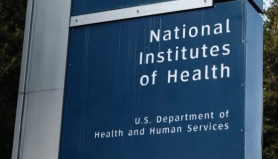
The Trump Administration’s cuts to scientific research aren’t just about saving money; they are an exposure of how much the government really values science.
As part of Donald Trump’s second term beginning this year, several cuts have already been announced, including one that will cap the costs for National Institutes of Health (NIH) research funds at 15 percent, as stated by a source from the House of Representatives. As a result, PBS News reports that researchers nationwide have responded to the administration’s policies that laid off more than 10,000 workers across the National Health board, and the reduced federal funding will result in billions of dollars being removed from scientific research budgets.
Actually, this isn’t the first time that Trump’s administration imposed research cut policies. During Trump’s first term from 2017-2021, the administration proposed to cut funding for NIH research by about $ six billion (20%). The House of Representatives government website states that this policy faced heavy opposition and disagreement from Democrats and Republicans—along with global audiences—as it would’ve reduced the funding spent for cancer research by nearly $1 billion. STEM innovations, including work in biology, physics, biochemistry, space exploration, drugs, and discovery are all at risk—again.
These cuts endanger health and research institutions, with the National Education Association estimating that the resulting delays could postpone the application of critical research findings for decades.
The constant dismantling of federal support for the science departments has prompted widespread concern among researchers, educators, and public health officials. Not only will the budget cuts affect research laboratories, but also universities. As these agencies lose both funding and personnel, universities, which rely heavily on federal funds to support research, are experiencing a steep decline in resources.
This disruption will stall critical research projects, counting those focused on cancer, public health, climate change, and chronic disease. The effects extend beyond the immediate job losses and funding shortages; reduced support for scientific exploration and training programs threatens the future generations of researchers. Young scientists might even be discouraged from pursuing careers in these fields, leading to a long-term decline in American scientific knowledge. Recent policy discussion and past actions by the Trump Administration continues to raise concerns about the future of science in the United States, especially capping the NIH funds, suggesting the true intention of government priorities.
Where will these reallocated funds be directed to, now? While it wasn’t specifically defined, this shift in science funding reflects a broader conservative idea that emphasizes limited government responsibility. Supporters of these cuts often argue that federal research funding can lead to business inefficiencies and that resources should be prioritized for areas with more immediate economic benefits. Additionally, ideological disagreements with certain scientific fields, such as climate change research, contribute to a skepticism of federally funded science. The goals of groups that support Project 2025 are also playing a large role in the current reduction in science funding.
This article also appears in our April 2025 print edition.













